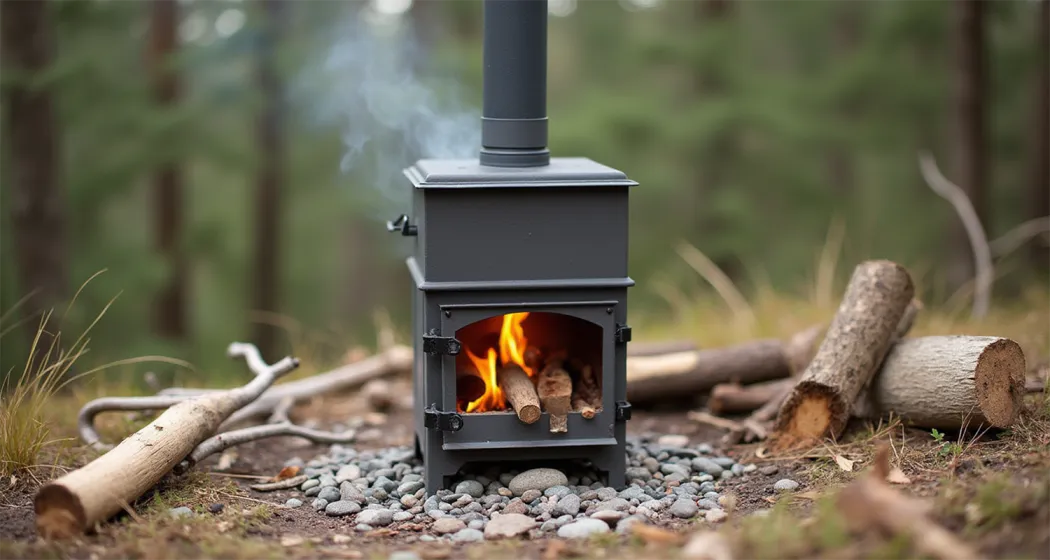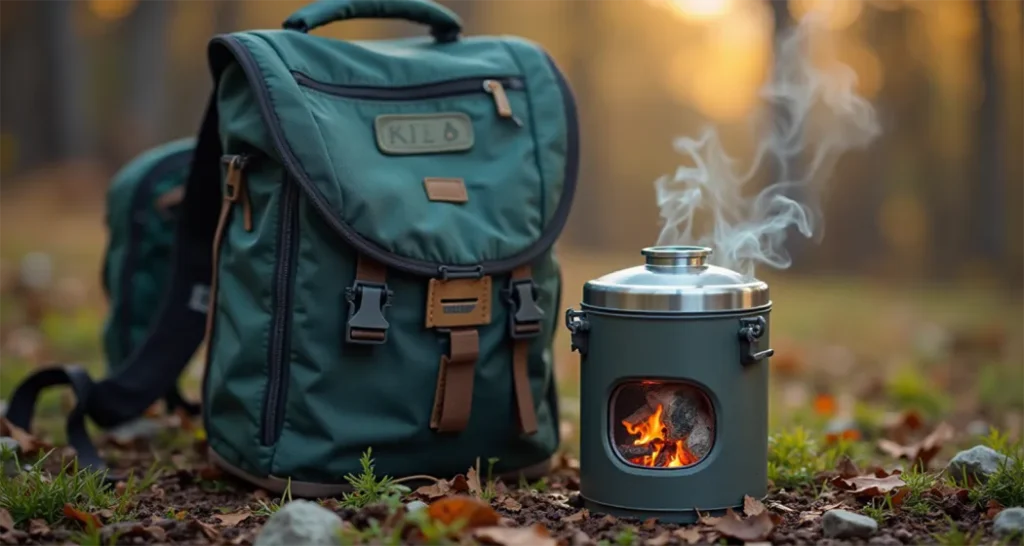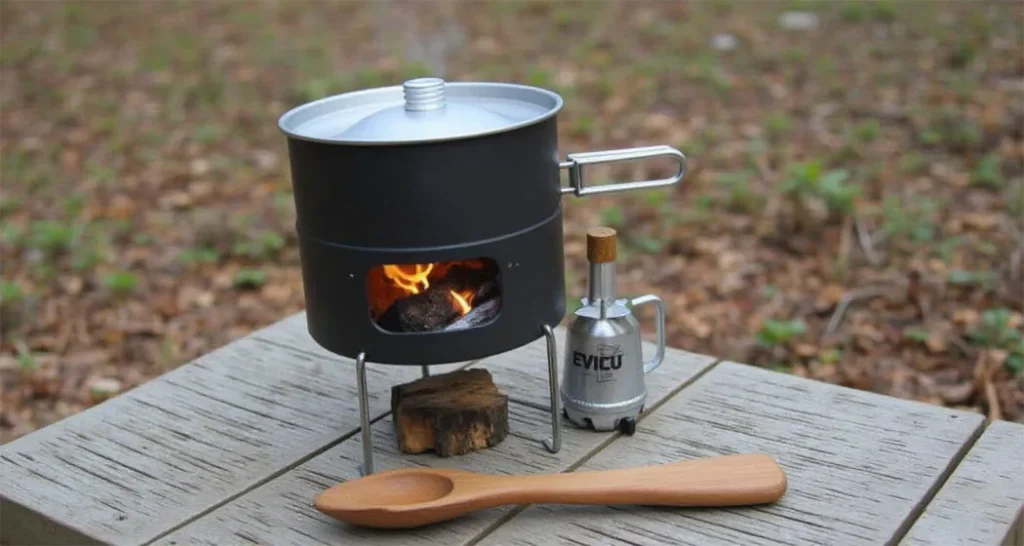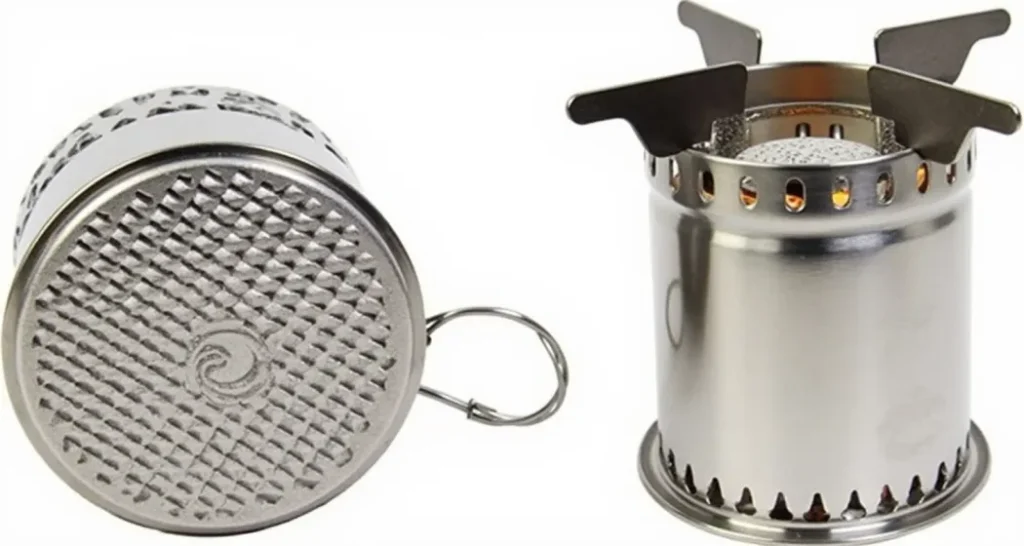
Top Camping Wood Burning Stoves for 2025: Features, Reviews, and Tips
If you’re planning your next adventure, having a reliable camping wood burning stove isn’t just a luxury it’s a game changer. This guide will walk you through the top stoves for 2025, highlighting their best features, sharing user reviews, and offering tips to help you make the most of your gear. Whether you’re a backpacker, a family camper, or somewhere in between, there’s something here for everyone.
- Check out our recommendations for stoves for family campers to find the perfect match for your needs.
Why Choose a Camping Wood Burning Stove?
There are plenty of reasons why wood burning stoves have become a camper’s best friend. First, they’re incredibly eco-friendly. Unlike gas-powered stoves that rely on fossil fuels, wood stoves run on renewable resources like twigs and small branches you can collect right at your campsite. Plus, you’re cutting down on the weight of carrying fuel canisters. -learn more about compact and ultralight stoves for efficient packing.
Cost-effectiveness is another major plus. If you’ve ever balked at the price of propane or butane refills, you’ll appreciate the free fuel that wood stoves offer. And let’s not forget versatility. These stoves aren’t just for boiling water they’re great for grilling, simmering, and even keeping your campsite warm on chilly nights. With a wood stove, you’re truly embracing the spirit of self-sufficiency in the great outdoors.
Key Characteristics to Consider in a Camping Stove
When you’re shopping for a camping wood burning stove, it’s important to choose one that aligns with your unique camping style and needs. Whether you’re an ultralight backpacker or a family camper, the right stove can make outdoor cooking a breeze. Here’s a deeper dive into the features you should focus on:

Portability
Portability is a top priority, especially if you’re venturing into remote areas where every ounce matters. For backpackers, lightweight and compact stoves are a must. Take the Solo Stove Lite, for instance it weighs just over a pound and fits neatly into most packs without taking up valuable space. These kinds of stoves are perfect for solo hikers or those with minimalist setups.
For car campers or larger groups, however, portability might not be as critical. In these cases, you can opt for sturdier and larger models that offer more cooking capacity. Some stoves even come with foldable legs or detachable components to strike a balance between portability and functionality. Keep in mind that a stove that’s too bulky could become a hassle to transport, even in a vehicle.
Heat Efficiency
Heat efficiency is what separates a good stove from a great one. A well-designed wood burning stove burns hot while using minimal fuel, which is particularly important when you’re relying on twigs and small branches from your campsite. Stoves with secondary combustion systems, like the BioLite CampStove 2+, are excellent choices. These systems allow for more complete burning of wood, producing less smoke and extracting more energy from each piece of fuel.
Consider how quickly the stove heats up and how evenly it distributes heat. A stove that burns too hot too quickly might scorch your food, while one that burns unevenly could make cooking frustrating. Look for models with adjustable vents or airflow controls to give you more precision over the flame.
Safety Features
Safety is paramount when dealing with open flames in the wilderness. Stoves with wide bases or adjustable legs offer better stability, especially on uneven or rocky ground. A wobbly stove can lead to spilled food, wasted fuel, or even injuries.
Additionally, some stoves come equipped with spark arrestors, which prevent embers from escaping and potentially igniting nearby dry grass or leaves. Heat shields are another feature to look for, as they protect the ground beneath the stove and help reduce the risk of accidents. Always prioritize a design that keeps the stove steady and reduces the chances of tipping over.
Durability
Durability is key for any gear you plan to rely on during your outdoor adventures. Camping stoves are exposed to intense heat, so they need to be made of materials that can withstand high temperatures without warping. Stainless steel is a popular choice for its strength, affordability, and resistance to rust. For those who want to go ultralight without compromising on durability, titanium stoves are a fantastic option, though they tend to be pricier.
Avoid stoves made from cheaper metals or alloys, as these are more likely to degrade over time, especially with frequent use. Investing in a high-quality stove may cost more upfront, but it will save you from replacing it after just a few trips.
Additional Considerations
- Ease of Use: Some stoves are easier to set up and ignite than others. Look for designs that require minimal assembly and are straightforward to light, even in windy or damp conditions.
- Cooking Surface: If you plan to cook more than just soup or coffee, ensure the stove can accommodate larger pots or pans.
- Packability: For those short on space, stoves that collapse or nest within other gear, like a pot or cup, can be incredibly convenient.
By focusing on these features, you can find a camping wood burning stove that not only suits your needs but also enhances your overall camping experience. A stove that’s portable, efficient, safe, and durable will serve as a reliable companion for years to come, no matter where your adventures take you.
- If you plan to cook more than just soup or coffee, ensure you have essential cookware for wood stoves for versatile meal preparation.
Reviews of the Best Camping Wood Burning Stoves for 2025
Here are some top-rated stoves to consider for your next trip:
1. Solo Stove Lite

The Solo Stove Lite is a favorite among ultralight backpackers, and for good reason. Weighing just over a pound, it’s incredibly lightweight and compact, making it easy to pack without taking up precious space in your bag. The stove’s double-wall construction and air intake holes create a secondary combustion system, ensuring efficient fuel use and reduced smoke. Pair it with easy camping meal ideas for quick, satisfying dishes on the go.
Pros:
- Extremely lightweight and portable
- Simple to use, with a quick setup process
- Highly efficient burn, requiring minimal fuel
Cons:
- Small cooking surface limits its use to smaller pots or single servings
- Not ideal for group camping
Best For:
Solo adventurers and ultralight backpackers who prioritize portability and efficiency over cooking capacity.
User Review:
“I’ve used this on countless trips, and it never disappoints. It’s perfect for boiling water in just a few minutes, whether I’m making coffee at sunrise or a quick soup after a long hike. It’s small, but it gets the job done!”
2. BioLite CampStove 2+
For those looking to combine functionality with modern technology, the BioLite CampStove 2+ is a game changer. This stove not only burns wood but also converts heat into electricity, allowing you to charge your devices through its USB port. It’s a bit heavier than other portable options, but the added features make it worth the weight for many campers. The larger cooking surface makes it a great option for family outings or multi-person trips, and its sleek design adds a touch of modernity to your campsite. Check out family camping meal recipes to make the most of its capabilities.
Pros:
- USB charging capabilities for powering devices in the wild
- Large cooking surface accommodates bigger pots and pans
- Efficient combustion with minimal smoke
Cons:
- Heavier than most portable stoves, making it less ideal for backpacking
- Higher price point compared to simpler models
Best For:
Tech-savvy campers, families, or anyone who values multifunctional gear that combines cooking with power generation.
User Review:
“The charging feature is surprisingly useful on long trips. I’ve powered my phone, GPS, and even my rechargeable headlamp with it! It’s a bit bulky for backpacking, but for family camping trips, it’s absolutely worth it.”
3. Ohuhu Camping Stove

If you’re shopping on a budget but don’t want to compromise on quality, the Ohuhu Camping Stove is a fantastic choice. Made of durable stainless steel, this stove can withstand high heat and rough outdoor conditions. While it lacks some of the advanced features of pricier models, it delivers consistent performance for basic cooking tasks. Its affordability makes it a favorite among campers who want reliability without breaking the bank.
Pros:
- Budget-friendly without sacrificing durability
- Sturdy stainless steel construction ensures longevity
- Compact and easy to transport
Cons:
- Limited advanced features, such as USB charging or wind protection
- Smaller fuel chamber means more frequent refueling
Best For:
Budget-conscious campers seeking a dependable stove for basic cooking needs.
User Review:
“Sturdy, reliable, and doesn’t break the bank. I’ve cooked everything from coffee to pasta on this stove, and it’s never let me down. It’s straightforward, but it performs exactly as needed.”
Tips for Using and Maintaining Your Stove
- Lighting the Stove: Always use dry wood for best results. If the wood is damp, split it into smaller pieces to expose dry surfaces.
- Maintaining Efficiency: Clear out ash after each use to keep airflow optimal. Clogged vents can lead to poor combustion.
- Storage: Store your stove in a waterproof bag to prevent rusting. With a bit of care and attention, you can significantly prolong its lifespan.
- Safety First: Always extinguish your stove completely before leaving camp. A small ember can cause big problems in dry conditions.
Frequently Asked Questions
Q: How do wood burning stoves compare to gas stoves?
Wood stoves are more eco-friendly and don’t require carrying heavy fuel canisters. However, gas stoves are quicker to set up and perform better in wet conditions.
Q: What type of wood works best?
Dry hardwoods like oak and maple burn hotter and last longer. Avoid resin-heavy woods like pine, as they can clog your stove.
Q: Can I use these stoves in winter?
Yes! Many wood stoves work exceptionally well in cold weather, provided you have dry wood and proper ventilation.
Choosing the right camping wood burning stove is an investment in your outdoor experience. From lightweight models for solo hikers to robust options for family trips, there’s a stove out there to suit every camper’s needs. The key is to prioritize features like portability, efficiency, and durability, so you’re prepared for whatever the wilderness throws your way.
So, which stove will you choose? Dive into our recommendations, try one out, and let us know your thoughts in the comments. Here’s to warm meals and cozy nights under the stars happy camping.
